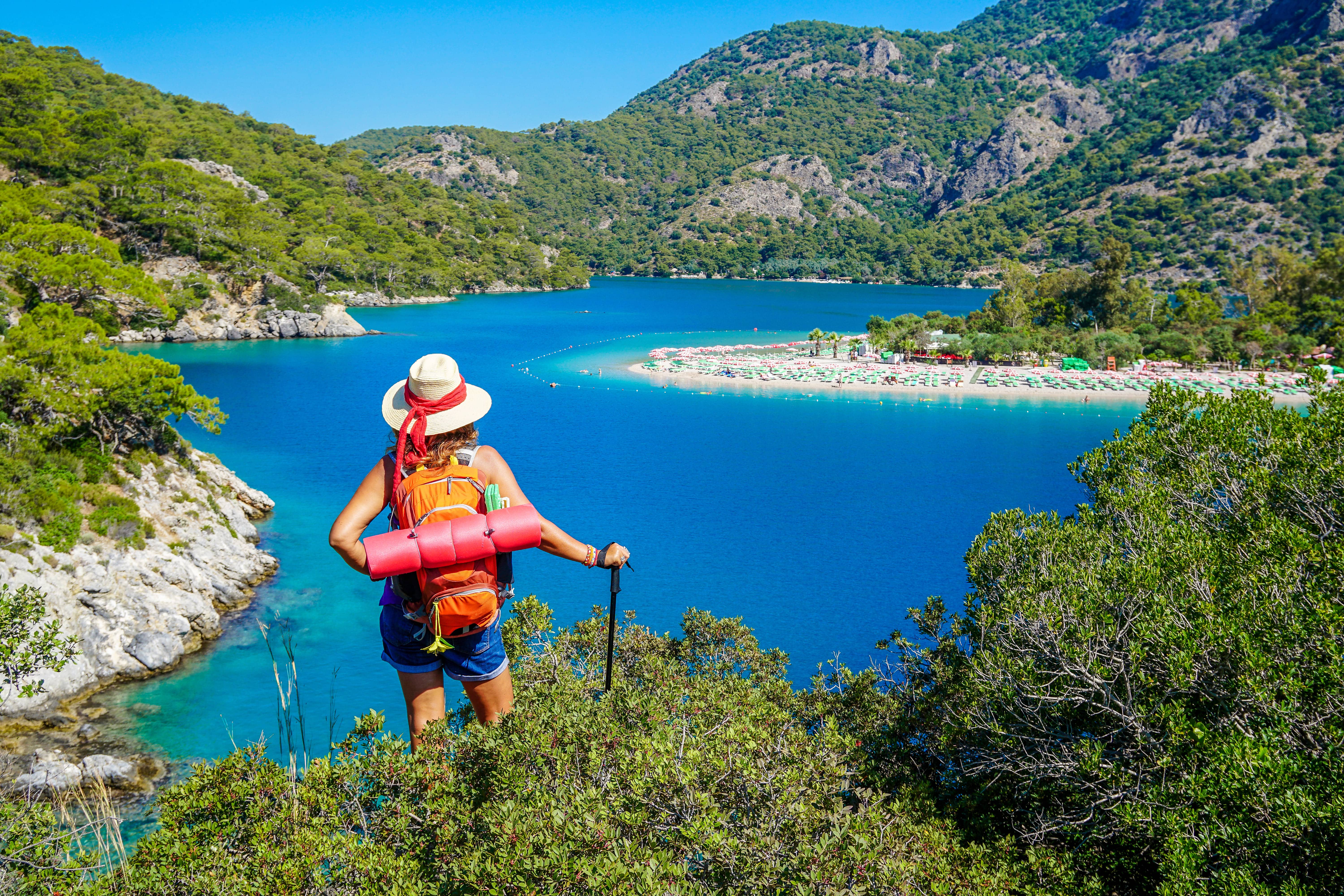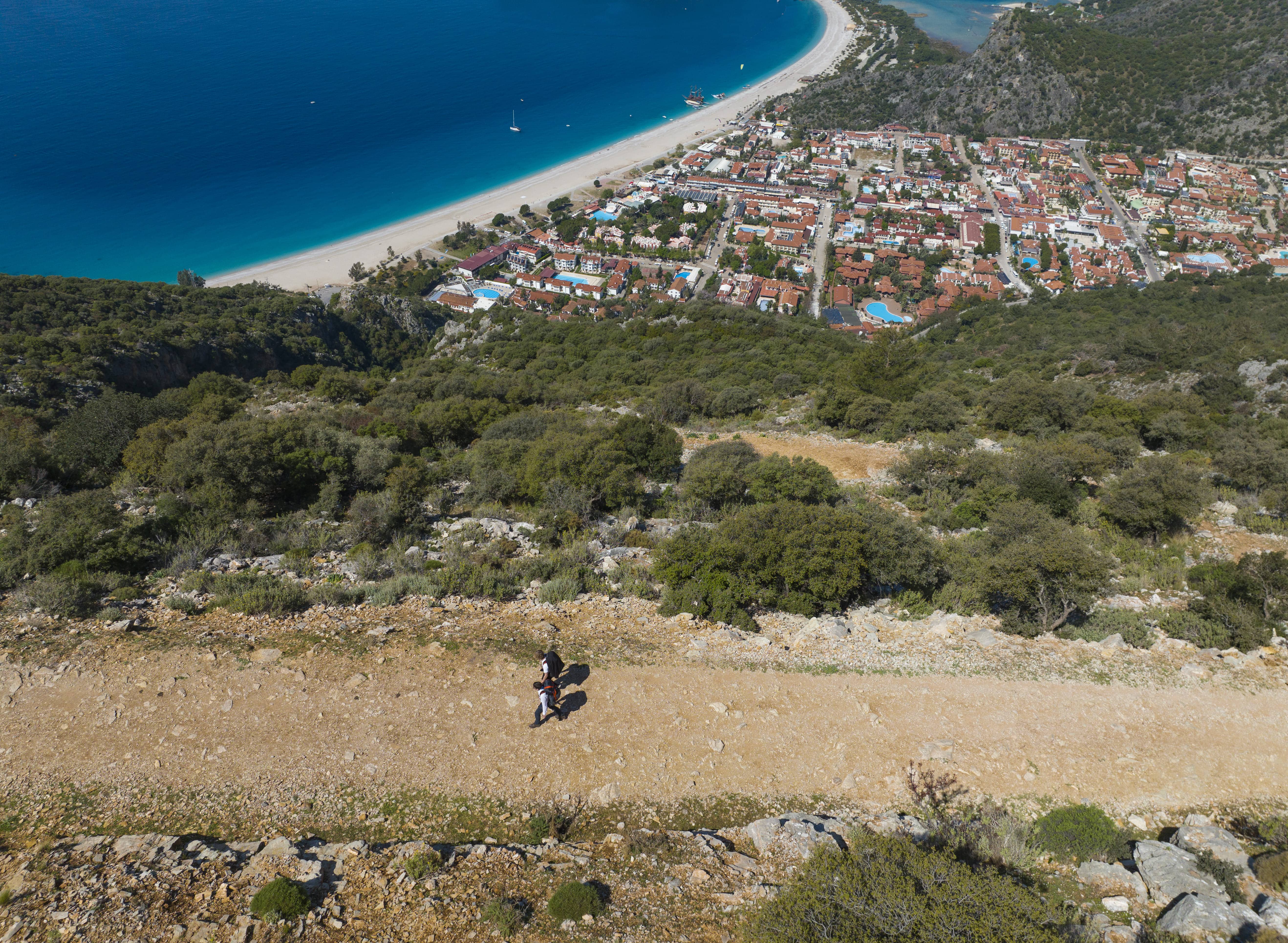
With its historical richness, natural beauty, and various destinations offering visitors unique travel experiences, Türkiye continues to earn its place on many prestigious travel lists. Most recently, the country added another recognition to its name with the Lycian Way—one of the most remarkable routes where trekking enthusiasts can experience nature, history, and outdoor adventure all at once. The Lycian Way, stretching between Fethiye and Antalya along the Turkish Riviera, was recently named the “World’s Most Beautiful Hiking Trail” by the UK-based Time Out magazine.

Beyond this iconic route, Türkiye offers many other trails along the Turkish Riviera and in Türkiye’s Aegean Region, where travellers can explore diverse landscapes, discover hidden gems, and experience authentic local life and warm hospitality before the chill of winter sets in.
Scenic and Timeless Trails in the Turkish Riviera
The Mediterranean coast of Türkiye offers unique hiking routes nestled set between the turquoise sea and the towering Taurus Mountains. And especially this time of the year is perfect for on-foot explorations. The most renowned of these routes is the Lycian Way, Türkiye’s first long-distance trail, stretching over 500 kilometres.
Combining nature, history, and local culture the trail passes through ancient Lycian settlements and significant sites like the UNESCO-listed Xanthos-Letoon, Olympos, Patara, and Myra. On the way, trekkers can also visit traditional highland villages such as Üzümlü and Bezirgan or try rock climbing at Geyikbayırı at the end of the route.

Those wishing to experience how Türkiye’s hinterland looked in Biblical times can follow the Paul Trail. Located in Antalya, this is Türkiye’s second long-distance trekking trail and traces the paths once taken by St. Paul on his missionary journeys. Two separate branches—one starting from Perge and the other from Köprülü Canyon National Park, merge at the ancient city of Adada and end in Cittaslow Yalvaç, offering a journey rich in both natural beauty and spiritual history.
History Comes Alive in the Aegean
The Aegean region also offers ideal walking weather and spectacular trails. The first route here is the Carian Way, Türkiye’s longest walking path. Tracing the footsteps of the ancient Carians, this 850-kilometre trail is divided into four main sections. It stretches from Bozburun, famous for its gulet production and sheltered coves, and Datça, home to almond trees and the ancient city of Knidos, to the Cittaslow Akyaka in Gökova Bay and Inner Caria, home to cities such as Mylasa (Milas) and Alinda.

Efeler Way, one of İzmir’s newest walking trails, is a sustainable route recognised by Green Destinations as one of the Top 100 Stories. Spanning 28 stages, it follows 27 main routes and one alternate path. Along the way, hikers can observe the culture of the Efe—the esteemed leaders of the Turkish irregular soldiers—passing through villages like Birgi and Şirince, both listed among the UN’s Best Tourism Villages, and traversing ancient paths and scenic plateaus. Hikers can also collect the Efeler Way Passport, stamped with a unique local emblem representing the identity of each village they visit.
In the inner Aegean, the Phrygian Way also traces the footsteps of the Phrygians through Afyonkarahisar, Kütahya, Eskişehir, and Ankara. The Phrygian valleys are filled with rock formations and ancient ruins, including the Phrygian open-air temples dedicated to the Mother Goddess Cybele in Kütahya, the UNESCO-listed Phrygian cultural capital Gordion in Ankara, and Ayazini Village in Afyonkarahisar, home to the Phrygian Andavaz Fortress, rock dwellings, and tombs. Stretching about 500 kilometres, this trail, whether you start in Afyonkarahisar, Kütahya, or Ankara, ultimately leads you to Yazılıkaya (Midas Monument) in Eskişehir, the religious centre of the Phrygians.
ORIENT
